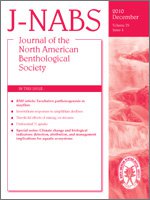Taxonomic identification of benthic macroinvertebrates is critical to protocols used to assess the biological integrity of aquatic ecosystems. The time, expense, and inherent error rate of species-level morphological identifications has necessitated use of genus- or family-level identifications in most large, statewide bioassessment programs. Use of coarse-scale taxonomy can obscure signal about biological condition, particularly if the range of species tolerances is large within genera or families. We hypothesized that integration of deoxyribonucleic acid (DNA) barcodes (partial cytochrome c oxidase subunit I sequences) into bioassessment protocols would provide greater discriminatory ability than genus-level identifications and that this increased specificity could lead to more sensitive assessments of water quality and habitat. Analysis of DNA barcodes from larval specimens of Ephemeroptera, Plecoptera, and Trichoptera (EPT) taxa collected as part of Maryland's Biological Stream Survey (MBSS) revealed ∼2 to 3× as many DNA-barcode groups or molecular operational taxonomic units (mOTUs) as morphologically identified genera. As expected, geographic distributions for several mOTUs were tighter than for the parent genus, but few mOTUs showed closer associations with water-quality variables or physical-habitat features than did the genus in which they belonged. The need for improved protocols for the consistent generation of DNA barcodes is discussed.
How to translate text using browser tools
18 January 2011
Incorporation of DNA barcoding into a large-scale biomonitoring program: opportunities and pitfalls
Erik M. Pilgrim,
Suzanne A. Jackson,
Stephanie Swenson,
Istvan Turcsanyi,
Ellen Friedman,
Lee Weigt,
Mark J. Bagley
ACCESS THE FULL ARTICLE
It is not available for individual sale.
This article is only available to subscribers.
It is not available for individual sale.
It is not available for individual sale.
benthic macroinvertebrate
bioassessment
DNA barcoding
environmental sensitivity
EPT
streams
taxonomic resolution





